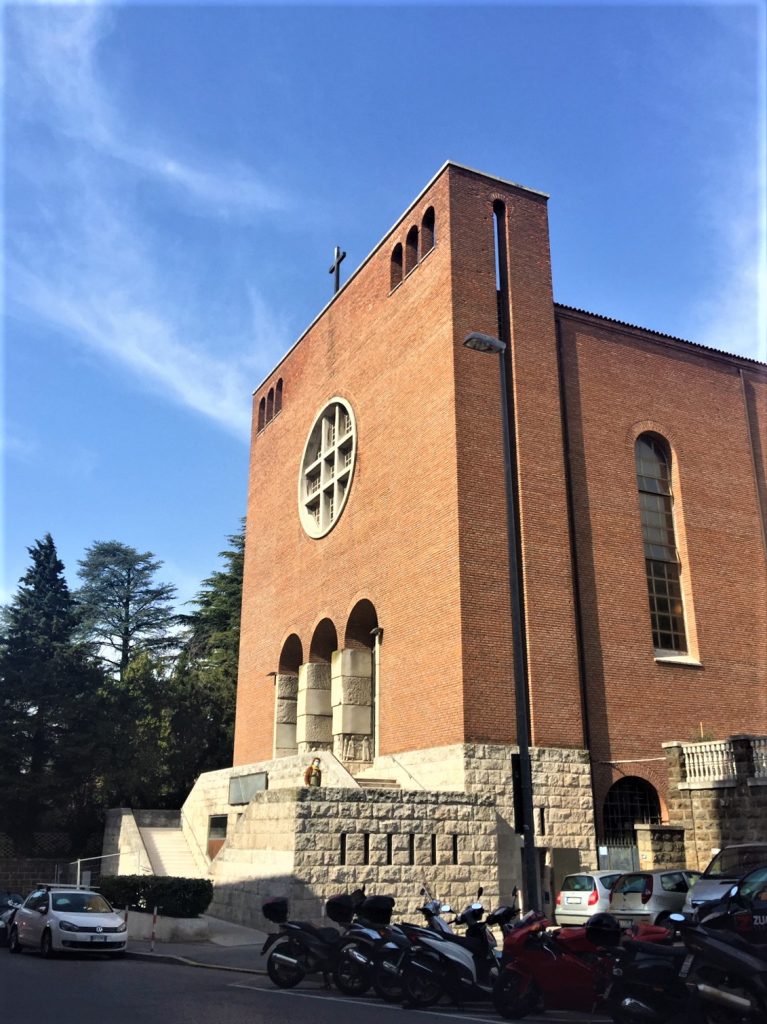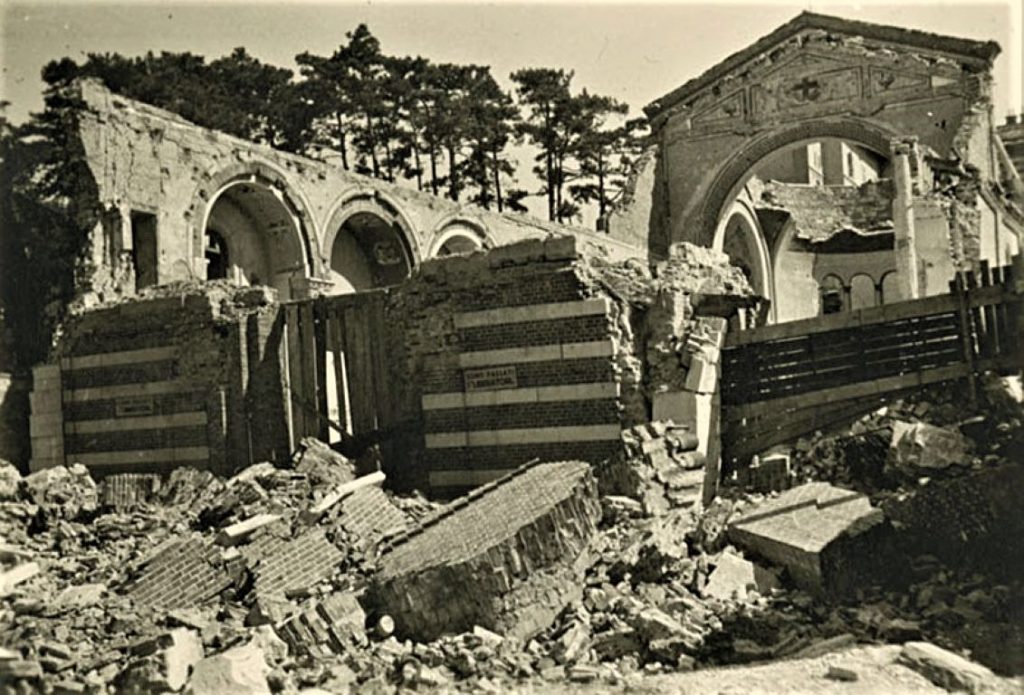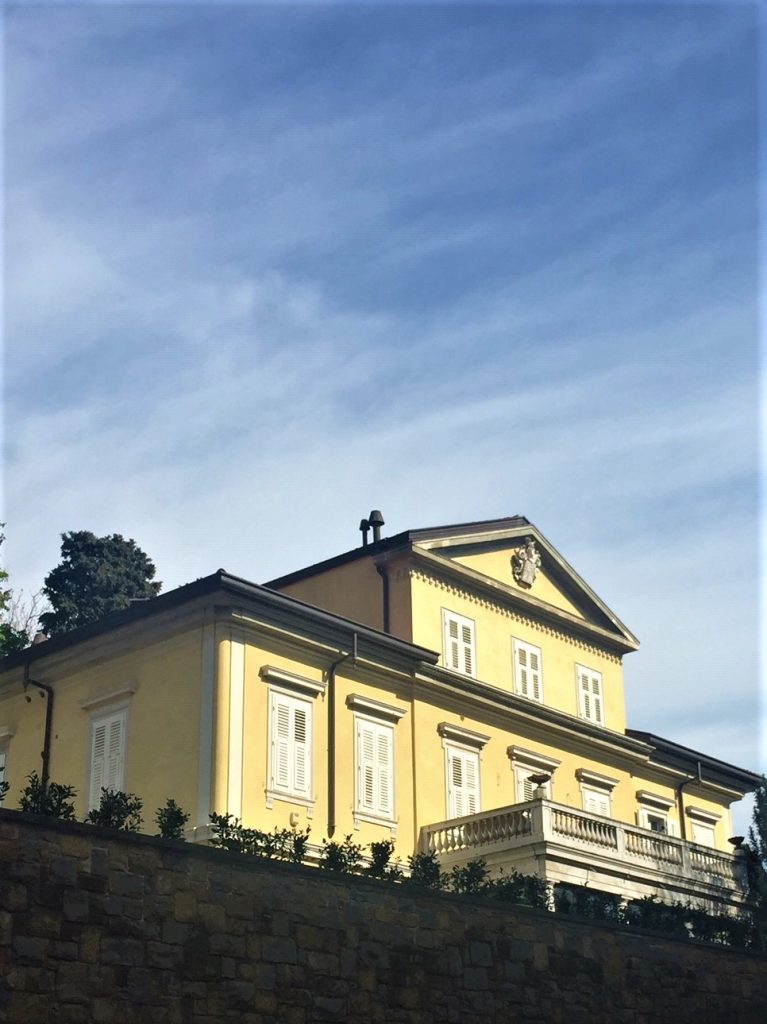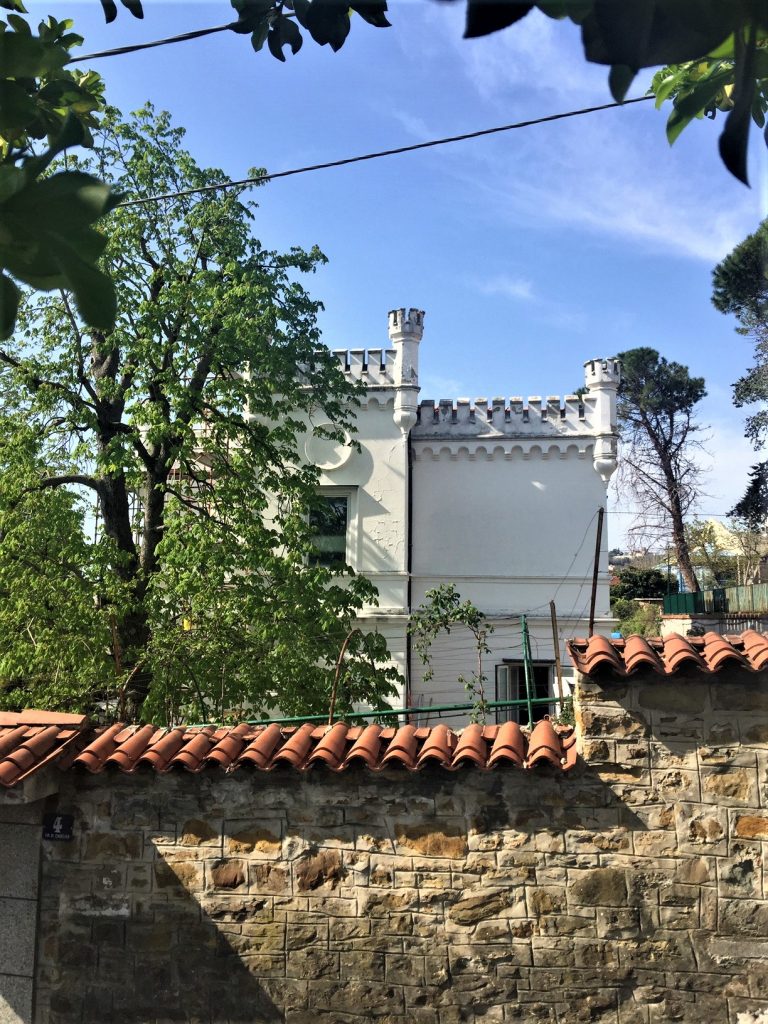by Alessandra Ressa
Continuing our travels along the base of Chiadino hill, at via Rossetti 44-46 is the first true jewel of the area, Villa Ferro, the former Villa Sigmundt.
A tall wall and an iron gate hide this beauty from view, but you will often find the gate wide open these days due to the careful work of paint renovation and garden tending, as the villa, after years of silent abandonment, appears to have been recently sold. Rumors say to rich Americans… What a cliché…
This beautiful mansion was built in 1861 by well-known Trieste architect Giovanni Berlam for the rich sea sponge merchant Edmund Sigmundt. (Who would have thought it? Sea sponges seemed to be a very proficuous business at the time, and many Triestine families were able to prosper from it). It is one of the few Trieste’s historical mansions built in the mid-1800s that has formally kept its original architecture, and probably the only one whose gardens have remained entirely untouched. Its Tuscan style was inspired by Medicean Villas.
In 1922, the mansion was sold to another rich Jewish family, the Sterns, and then to the Ferro family, who moved to Milan and put it up for sale around 15 years ago. During WWII, the house was occupied by German officers, and in 1945 it was confiscated by the British army to accommodate their headquarters. The garden that surrounds it is truly a magnificent sight, with stone fountains, statues and circular stairs. Unsurprisingly, it has been used as a location for many films and tv series.

Immediately after Villa Ferro on the same side of the street stands the red brick church Beata Vergine delle Grazie. This sturdy church was rebuilt in 1951. The original, which had been erected in the early 1930s, was completely destroyed by an allied bomb on June 10th, 1944.
Undoubtedly, the bomb wasn’t meant for the church, but many civilian buildings were destroyed that day along with war targets. Only a few hundred meters away, there stood Villa Modiano (yes, those Modianos, read more about this in my next article, Via Rossetti Part 3), home residence of the Nazi supreme commander of the Adriatic wall Friedrich Reiner.

Further up the street is the entrance to the municipal park known as Villa Engelmann. Although we know that this park must have belonged to the homonym mansion, and that the rich Engelmann family donated the property to the Comune, there apparently appears to be no trace of such a house, and no historical document mentioning its demolition or change of name is available anywhere. A small, abandoned, square, and crumbling building located in the middle of the park is often referred to as the original mansion, but it’s hard to believe that this tiny square shack is actually the missing villa.

Could majestic Villa Ada, standing in all its elegance at the foot of the park overlooking via Rossetti be actually Villa Engelmann in disguise? The residents of Villa Ada ( which has been converted into luxury apartments) and visitors to the park agree that Villa Ada is not Villa Engelmann and the little evidence available confirms it.
Villa Ada was built around 1840 by Trieste Jewish family Levy. It was bought by Englishman John Bryce in 1858 (an intellectual and writer buried in S. Anna cemetery) and then, according to local sources, sold to Rossetti himself. The last private owner was Ada Lekner in 1925, who named the villa after herself. In 1989 it was sold and transformed into an apartment building. It still retains its past charm, despite the high walls, modern garage access, and cheap mailboxes.

If you keep strolling along via Rossetti and peek through the side streets you will see many old luxury villas that have miraculously survived demolition and replacement by anonymous and often ugly apartment buildings. Among those, there’s a miniature replica of Castello di Miramare at the cross street with via Chiadino.

Part 3 of this series touches on many more beautiful buildings, some standing in all their splendor, others abandoned and awaiting their uncertain destiny: ancient hospitals, abandoned army barracks, fabulous parties in magnificent villas, Allied commandos and nunneries, even Nazi bunkers and tunnels under unsuspecting anonymous buildings and schools.
Don’t miss this and much more in Part 3.






























I look forward to reading part 3 !
Thank you Alessandra .. you did really an amazing job.
Very fine work. We live in ground floor of Villa Ada and have restored it. If you would like to visit and see restoration, we invite you.